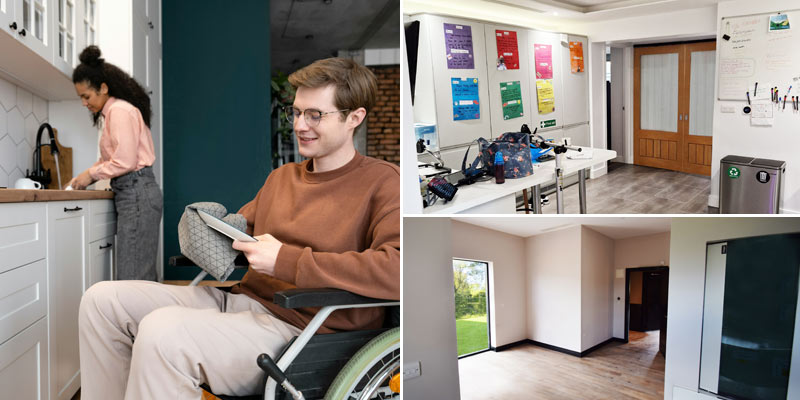For Carers Week, we have put together an article about the importance of considering carers’ needs when designing accessible homes.
Thoughtful home design not only benefits the person with disabilities but also creates optimal working conditions for the carers that provide daily care, whether family members or paid support staff. Ensuring adequate room to move, rest and work is part of giving carers the respect and support they deserve, and this aligns with Carers Week’s call for greater equality.
Key Design Considerations for Carers
Designing for carers means going beyond standard accessibility. Homes should include features that make caregiving tasks safer and more efficient. Key considerations include:
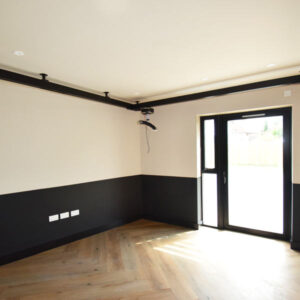
GENEROUS CIRCULATION AND TRANSFER SPACE
Moving and handling are key design elements when it comes to considering a carer’s needs in an accessible or adapted home.
Carers often assist with lifting, hoisting or positioning a client, which requires clear space.
Wider doorways, open floor plans and room for ceiling hoists can greatly ease the physical strain on caregivers.
In practice, this means planning bedrooms, bathrooms and living areas large enough to manoeuvre a wheelchair and allow two people (for example, a carer and the client) to work side-by-side.
For two-person transfers or complex care moments, spacious wet-rooms and unobstructed bedroom areas are particularly important.
SUPPORT FOR MULTIPLE CARERS
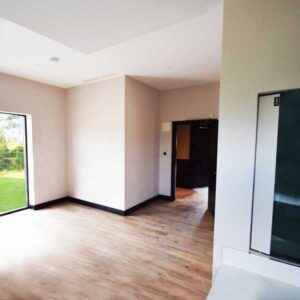
Many challenging care activities require more than one person. Homes should accommodate configurations where two carers can assist simultaneously (for example, during transfers or therapy).
This may involve having a bench or chair in bathrooms so two carers can help with bathing, and pathways wide enough for two people. While not all design guides spell this out, it follows the same principles of generous space and flexibility recommended by accessible housing standards.
Carers may be male or female, and designs should not presume one or the other. For example, carer sleeping quarters and bathrooms should be large enough and private enough to be comfortably used by anyone.
Adjustable fixtures (like hand-held shower heads and height-adjustable beds) accommodate carers of any size.
All Freedom projects ensure that carer spaces provide privacy and comfort for carers to rest and recharge.
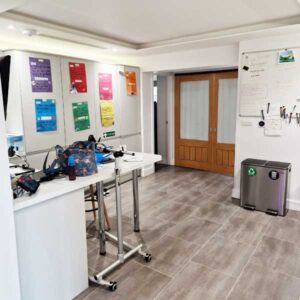
WORKSPACE FOR ADMINISTRATION
Caring involves paperwork, record-keeping and coordination (medication logs, care plans, phone calls, etc.). It’s helpful if the home includes a small desk or office nook where carers can do this work.
A quiet corner with a desk, computer or filing area means carers can manage schedules, liaise with health professionals, or simply catch up on notes without racing back to the client’s bedside for every detail.
By providing carer-friendly workspaces, you create a supportive and inclusive environment for balancing adminstration tasks with caring responsibilities.
Our adapted home projects usually include integrated carer spaces and even dedicated carer work space areas. These include the necessary amenities so that carers have a base for both rest and work.
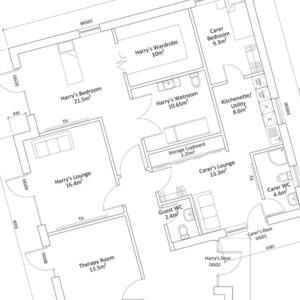
LIVE IN AND OVERNIGHT ACCOMMODATION
When 24-hour or overnight care is needed, the home should include self-contained accommodation for the carer(s). This might be a private bedroom with en-suite or a small studio apartment attached to the home.
Such spaces provide a carer with their own sleeping area, whilst at the same time keeping them close for quick response if the person they are caring for calls out.
We believe that dedicated carer accommodation should allow for flexibility in caregiving schedules, especially during overnight care.
More than one of our accessible home projects has included a fully-equipped carer accommodation area within the property.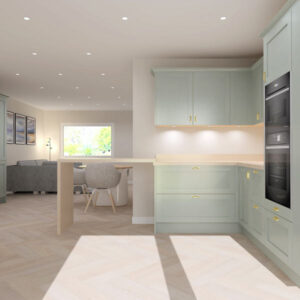
Having an independent space, complete with its own bed and kitchenette, lets a carer be present but also maintain normal rest. In turn, this supports continuous, high-quality care.
If the property is being designed as a shared home for family members it is important to seamlessly combine spaces that suit all family members.
Fully-inclusive areas are vital for bringing the family together comfortably under one roof. The same accessibility recommendations would apply, including proximity of sleeping quarters for quick access when help is required.
The Freedom Living Solutions team has coverted or built a number of inclusive accessible homes, including properties designed specifically for multi-generational living.
Designing for Equality and Best Practice
Good accessible design is increasingly recognised in UK policy and standards. For instance, Part M4 (2) – Accessible and Adaptable Dwellings includes an optional higher standard. Many local plans now encourage or require new homes to be built to these standards.
These standards call for features like step-free access, wide hallways and turning spaces – all of which inherently benefit carers by giving them room to work safely. Likewise, guidance such as British Standard BS 8300-1:2018 and the expanded Part 2 BS 8300-2:2018 stress generous clearances in bathrooms and bedrooms. In short, the same features that make a home usable for a disabled person (wide doors, space for equipment, well-placed lighting and controls) also reduce carers’ physical strain.
Aligning with the Carers Week call for equality, inclusive home design recognises carers as part of the caregiving team. When carers have functional bedrooms, privacy, room to manoeuvre and a place to work, it helps ensure they are ‘truly valued, recognised and supported,’ echoing the Week’s messages.
Our Experience: Collaborative, Carer-Focused Design
At Freedom Living Solutions we put these principles into practice. We routinely collaborate with case managers, occupational therapists, physiotherapists and families to tailor homes for clients with complex needs.
Every project we undertake gives consideration to the needs, comfort and wellbeing of carers. Most of our home conversion or new home build projects include dedicated carer facilities. But alongside accommodation, we also put great thought into designing spaces that support day-to-day care tasks. This ranges from the installation of ceiling hoist systems, through to designing appropriately-sized therapy spaces.
When designing a property, or talking about the considerations and requirements for a property, a space for carers often needs to be considered.
Recently, for example, we worked with a Kent-based case manager and occupational therapist to reconfigure a family home for a neurodivergent client. A great deal of thought went into balancing the individual’s sensory and safety needs with the practical requirements of their carer(s). Was there enough space for moving and handling? Can the person be supported by two carers when they are having a particular challenge? How do we accommodate both male and female carers? Do we need to provide a space for carers to carry out their admin duties? What about Live in/overnight carers?
While a carer does spend the majority of their time with their client, we appreciate that they also need to have space to do their jobs safely and to the best of their ability. This reflects our commitment to considering every aspect of caregiving in our designs. The bottom line is that both the client and carer should be happy within the adapted environment.
Further Advice and Information
Caring for a loved one is demanding work, and good design can make a huge difference. This Carers Week, as we highlight the theme ‘Caring About Equality’ remember that equality includes the work environment of carers. By planning adapted homes with carers’ needs in mind, we honour the vital role carers play.
Freedom Living Solutions remains dedicated to creating disability-adapted homes that support not just the residents but also their carers, ensuring everyone can live and work together in safety and dignity. By following such best practices, we can create homes that truly work for both clients and the carers who support them.
If you require further information or advice about a carer-inclusive adapted home project, please get in touch. A member of the Freedom team would be happy to help.
You can also follow us on Facebook and LinkedIn for more accessible home build and adaptation info articles.
Related Posts:
Designing Homes for Care Givers >

